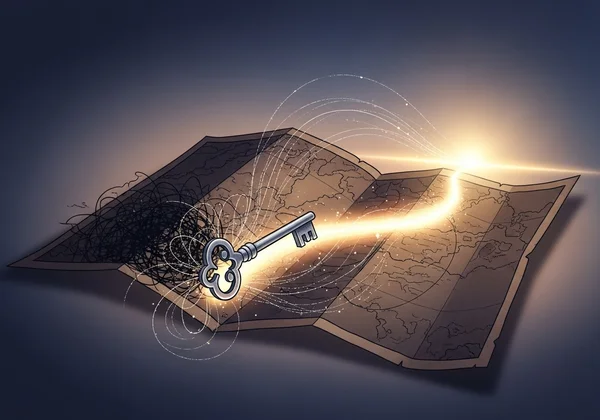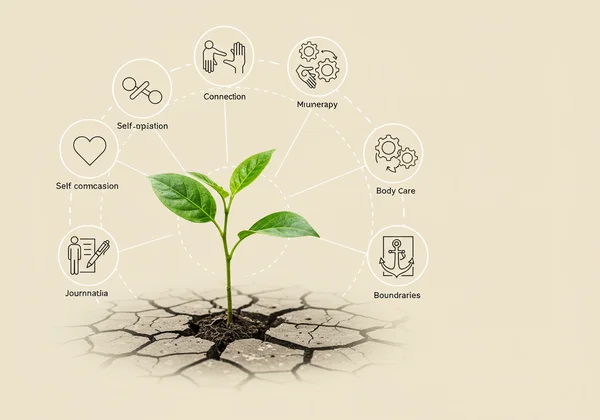High ACE Score on Your ACE Test? How to Heal and Build Resilience
Receiving a high Adverse Childhood Experiences (ACE) score can feel overwhelming. One moment, you have a new sense of clarity about your life; the next, you're left wondering, what does my ACE score mean for my future? If you're feeling this mix of emotions, know that you are not alone, and your feelings are valid. But here is the most important message: your score is not your destiny. It's a roadmap to understanding your past so you can build a healthier, more empowered future. This is the first step.
To build resilience, you need practical tools. This guide offers seven science-backed strategies to help you navigate your journey of healing. Understanding your past is a powerful catalyst for growth, and you can start that process of self-discovery by taking our confidential ACE test online.
Why a High ACE Score is a Starting Point, Not a Sentence
It's easy to view a high ACE score as a definitive label. However, experts in psychology and trauma recovery see it differently. They view it as a critical piece of information—a key that unlocks a deeper understanding of your own story. This knowledge empowers you to take targeted, effective steps toward healing and growth.
Understanding Your Score: What it Represents (and What it Doesn't)
Your ACE score is a measure of risk, not a prediction of certainty. Based on the groundbreaking ACE Study by the CDC and Kaiser Permanente, the score quantifies your exposure to 10 specific types of childhood adversity. A higher score indicates a higher statistical risk for certain health and well-being challenges in adulthood.
What it doesn't represent is your character, your worth, or an unchangeable future. The real ACE score meaning is in the awareness it provides. It gives a name to experiences that may have been confusing or unspoken, validating your reality. This awareness is the foundation upon which you can build a life filled with strength and joy. If you don't know your score yet, you can get a clearer picture with our confidential test.
Introducing Resilience: Your Innate Capacity to Heal
Resilience is the remarkable human ability to adapt and bounce back from stress, adversity, and trauma. It is not something you either have or don't have; it is a set of skills that can be learned and strengthened over time, much like a muscle. Your brain and body have an innate capacity to heal, and building resilience is how you activate that process.
Every strategy you learn and practice rewires your brain for safety, connection, and hope. Think of your ACE score as the "before" picture. The journey of building resilience is the process of creating the "after" picture—one defined not by your past, but by your strength. You can take the ACE test and begin your journey today.

7 Strategies to Heal from Childhood Trauma
Now that we've reframed the score as a starting point, let's explore actionable ways to heal from childhood trauma. These strategies are designed to be practical, empowering you to take an active role in your well-being.

Strategy 1: Cultivate Self-Compassion and Mindfulness
Childhood adversity often leaves behind an inner critic that perpetuates feelings of shame and self-blame. Self-compassion is the antidote. It involves treating yourself with the same kindness and understanding you would offer a good friend. When you notice difficult feelings, try placing a hand over your heart and saying, "This is a moment of suffering. It's okay to feel this way."
Mindfulness is the practice of paying attention to the present moment without judgment. This helps you step out of painful memories of the past or anxieties about the future. A simple mindfulness exercise is to focus on your breath for one minute, just noticing the sensation of air entering and leaving your body.
Strategy 2: Seek Safe, Supportive Connections
Trauma often happens in relationships, but healing happens in relationships, too. Humans are wired for connection. Seeking out supportive connections with people who make you feel safe, seen, and heard is fundamental to recovery. This could be a trusted friend, a supportive family member, a partner, or a support group.
These relationships help regulate your nervous system and challenge the belief that you are alone in your struggles. Sharing your experiences with someone who can listen without judgment can be incredibly validating and can reduce the burden of carrying your story by yourself.
Strategy 3: Find Professional Trauma Recovery Techniques
While self-help strategies are powerful, working with a trained professional can be transformative. A therapist specializing in trauma can provide evidence-based trauma recovery techniques tailored to your needs. Modalities like Eye Movement Desensitization and Reprocessing (EMDR), Somatic Experiencing, and Trauma-Focused Cognitive Behavioral Therapy (TF-CBT) are designed specifically to help process traumatic memories safely.
Remember, using an online screening tool is an excellent first step. Discussing your results with a professional can help you create a comprehensive healing plan. You can find your score first, after your ACE score test, and then decide on the next steps.
Strategy 4: Nurture Your Body to Heal Your Mind
The mind-body connection is not just a concept; it's a biological reality. Chronic stress from ACEs can leave the nervous system in a state of high alert. To nurture your body, focus on the fundamentals: prioritize consistent sleep, eat nourishing foods, and engage in gentle movement like walking, stretching, or yoga.
These activities do more than just improve physical health. They send powerful signals of safety to your brain, helping to regulate your stress response system. Taking care of your body is a profound act of self-respect and a critical component of healing the mind.

Strategy 5: Use Journaling for Emotional Processing
The thoughts and feelings associated with past trauma can often feel chaotic and overwhelming inside your head. Journaling for emotional processing provides a safe, private space to untangle them. You don't have to be a great writer; the goal is simply to get the feelings out.
You can try a "brain dump," where you write continuously for 10 minutes without censoring yourself. Or, you can use prompts like, "What does my younger self need to hear today?" or "What is one small thing I can do to feel safer right now?" This practice helps you become an observer of your thoughts rather than being consumed by them.
Strategy 6: Practice Grounding to Regulate Stress
When you feel triggered or overwhelmed, your mind can spiral. Grounding to regulate stress is a technique that pulls you back into the present moment and your body. It helps interrupt the fight-or-flight response and re-establishes a sense of safety.
A simple and effective method is the 5-4-3-2-1 technique. Wherever you are, pause and identify:
- 5 things you can see.
- 4 things you can feel (the chair beneath you, your feet on the floor).
- 3 things you can hear.
- 2 things you can smell.
- 1 thing you can taste. This simple sensory exercise anchors you firmly in the now.
Strategy 7: Establish and Maintain Healthy Boundaries
Growing up in an environment with a high number of ACEs often means that healthy boundaries were not modeled or respected. As an adult, learning to establish and maintain healthy boundaries is an act of self-preservation and empowerment. Boundaries are not walls to push people away; they are guidelines that teach others how to treat you with respect.
This can be as simple as saying "no" to a request you don't have the energy for, or limiting contact with people who consistently drain you. Start small with low-stakes situations to build your confidence. Every boundary you set reinforces the message to yourself that your needs matter. It's a key part of how you can understand your ACE score and build a different future.
Your Path Forward: Turning Your ACE Score into Strength
Your ACE score is a single chapter, not your whole story. It is a powerful piece of information that illuminates your past, but you are the author of your future. The journey to healing and ACE score resilience is built one step at a time, through compassion, connection, and consistent practice. You have an incredible capacity to heal and thrive.
Remember, your past does not define your future. Understanding your ACE score is the first step. If you haven't yet, take our free ACE test to begin your journey of self-exploration and healing.

Frequently Asked Questions About High ACE Scores and Healing
Can you recover from a high ACE score?
Absolutely. Recovery is not about erasing the past, but about reducing its impact on your present life. By building resilience, seeking support, and using the strategies outlined above, millions of people with high ACE scores go on to live healthy, fulfilling, and joyful lives. Healing is a journey, and a high score is simply the starting point for that transformative path.
What is a toxic stress response?
A toxic stress response occurs when a child experiences strong, frequent, or prolonged adversity—such as the events measured by the ACE test—without adequate adult support. This prolonged activation of the stress response systems can disrupt the development of brain architecture and other organ systems. As an adult, this can manifest as difficulty managing emotions or an increased risk for stress-related health conditions. Healing strategies help regulate this response.
How do I begin to heal from childhood trauma?
The first step is always awareness. Acknowledging your experiences and understanding how they may have shaped you is foundational. A great way to begin is by gaining clarity on your personal history. Using a confidential tool like our free childhood trauma quiz can provide a structured framework for this self-exploration, empowering you with the knowledge you need to take the next step.